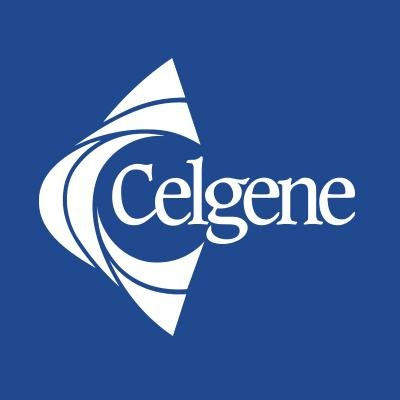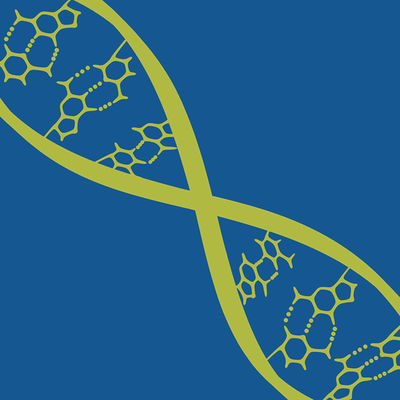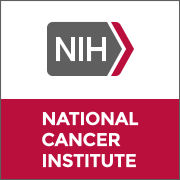预约演示
更新于:2025-05-07
IDH2 mutation Acute Myeloblastic Leukemia
IDH2突变急性髓系白血病
更新于:2025-05-07
基本信息
别名- |
简介- |
关联
4
项与 IDH2突变急性髓系白血病 相关的药物靶点 |
作用机制 IDH2抑制剂 |
在研机构 |
原研机构 |
最高研发阶段批准上市 |
首次获批国家/地区 美国 |
首次获批日期2017-08-01 |
靶点 |
作用机制 Bcl-2抑制剂 |
在研机构 |
原研机构 |
非在研适应症 |
最高研发阶段批准上市 |
首次获批国家/地区 美国 |
首次获批日期2016-04-11 |
作用机制 IDH1抑制剂 [+1] |
在研机构 |
原研机构 |
非在研适应症 |
最高研发阶段临床3期 |
首次获批国家/地区- |
首次获批日期1800-01-20 |
8
项与 IDH2突变急性髓系白血病 相关的临床试验NCT06672146
A Randomized Phase II Trial of ASTX727 and Venetoclax Compared With ASTX727, Venetoclax, and Enasidenib for Newly Diagnosed Older Adults With IDH2 Mutant Acute Myeloid Leukemia: A MyeloMATCH Substudy
This phase II MyeloMATCH treatment trial studies how well ASTX727 and venetoclax plus enasidenib works compared to ASTX727 and venetoclax alone for the treatment of older patients with newly diagnosed acute myeloid leukemia (AML) or younger patients who are considered unfit for standard treatment, and who have an abnormal change (mutation) in the IDH2 gene. This gene mutation can cause AML to grow and spread. This trial is being done to see if adding enasidenib to the usual treatment can help more patients with the IDH2 gene get rid of AML. Cedazuridine is in a class of medications called cytidine deaminase inhibitors. It prevents the breakdown of decitabine, making it more available in the body so that decitabine will have a greater effect. Decitabine is in a class of medications called hypomethylation agents. It works by helping the bone marrow produce normal blood cells and by killing abnormal cells in the bone marrow. Venetoclax is in a class of medications called B-cell lymphoma-2 (BCL-2) inhibitors. It may stop the growth of cancer cells by blocking Bcl-2, a protein needed for cancer cell survival. Enasidenib works by stopping the growth and spread of tumor cells that have the IDH2 mutation. Giving ASTX727 and venetoclax plus enasidenib may work better in treating AML patients with the IDH2 mutation.
开始日期2025-12-27 |
申办/合作机构 |
CTR20243946
单中心、开放、单剂量设计,研究中国成年男性健康受试者单次口服250 mg/100 μCi [14C]HMPL-306后人体内物质平衡的I期临床试验
主要目的:评价中国男性健康受试者单剂量口服[14C]HMPL-306后体内的吸收、代谢和排泄。 次要目的:评价HMPL-306在中国男性健康受试者中单剂量给药后的PK行为,采用已验证的液相色谱串联质谱法(LC-MS/MS)方法定量分析血浆中HMPL-306及其代谢产物(如适用)的浓度,获得血浆中HMPL-306及其代谢产物(如适用)的PK参数;评价单剂量口服[14C]HMPL-306单次给药后健康男性受试者的安全性和耐受性。
开始日期2024-11-26 |
申办/合作机构 |
CTR20240999
评价 HMPL-306对比挽救性联合化疗方案在伴IDH1、IDH2突变的复发/难治急性髓系白血病(R/R AML)患者中的疗效和安全性的多中心、随机、开放标签III期临床研究
主要目的:
对比 HMPL-306 与挽救性化疗方案在伴IDH1或IDH2突变的 R/R AML患者中的总体生存情况
次要目的:对比 HMPL-306与挽救性化疗在伴IDH1或IDH2突变的 R/R AML患者中的其他疗效;评价 HMPL-306与挽救性化疗在伴IDH1或IDH2突变的 R/R AML患者中的安全性;评价 HMPL-306在伴IDH1或IDH2突变的R/R AML患者中的药代动力学(PK)特征
开始日期2024-04-26 |
申办/合作机构 |
100 项与 IDH2突变急性髓系白血病 相关的临床结果
登录后查看更多信息
100 项与 IDH2突变急性髓系白血病 相关的转化医学
登录后查看更多信息
0 项与 IDH2突变急性髓系白血病 相关的专利(医药)
登录后查看更多信息
26
项与 IDH2突变急性髓系白血病 相关的文献(医药)2025-01-01·Med
HMPL-306 in relapsed or refractory IDH1- and/or IDH2-mutated acute myeloid leukemia: A phase 1 study
Article
作者: Tang, Qinghua ; Wang, Hehua ; Sun, Jie ; Chen, Guo ; Huang, Xiaojun ; Jing, Hongmei ; Chen, Jian ; Wang, Linfang ; Yan, Sai ; Li, Juan ; Dong, Yugang ; Xu, Yajing ; Liu, Hui ; Shi, Michael ; Su, Weiguo ; Gong, Tiejun ; Fan, Songhua ; Zhang, Xuhan ; Hu, Lijuan ; Wangwu, Jiaxuan ; Zhang, Yu ; Xu, Chongyuan ; Hu, Yu ; Mi, Ruihua ; Zhang, Cheng ; Wei, Xudong ; Cai, Zhen ; He, Wenjuan ; Zhong, Zeyu ; Zhao, Weili ; Yan, Huan ; Jiang, Zhiping ; Wu, Wen
2024-01-23·Blood Advances
A study to assess the efficacy of enasidenib and risk-adapted addition of azacitidine in newly diagnosed IDH2-mutant AML
Article
作者: Mao, Hsiaoyin Charlene ; Olin, Rebecca L. ; Chervin, Jordan ; Mims, Alice S. ; Vergilio, Jo-Anne ; Marcus, Sonja ; Borate, Uma ; Patel, Prapti ; Yocum, Ashley O. ; Cai, Sheng F. ; Lin, Tara ; Stefanos, Mona ; Dunbar, Andrew J. ; Li, Yan ; Burd, Amy ; Druggan, Franchesca ; Blum, William G. ; Chen, Timothy L. ; Byrd, John C. ; Schiller, Gary J. ; Huang, Ying ; Lance, Jennie R. ; Heerema, Nyla A. ; Litzow, Mark ; McNulty, Samantha N. ; Foster, Matthew C. ; Rosenberg, Leonard ; Kovacsovics, Tibor ; Shoben, Abigail ; Boyiadzis, Michael ; Druker, Brian J. ; Collins, Robert H. ; Druley, Todd ; Baer, Maria R. ; Levine, Ross L. ; Foran, James M. ; Stein, Eytan M. ; Stock, Wendy
2024-01-01·Cancer Science
Phospholipid metabolic adaptation promotes survival of IDH2 mutant acute myeloid leukemia cells
Article
作者: Arima, Yuichiro ; Wang, Yuxin ; Morishima, Tatsuya ; Takizawa, Hitoshi ; Suda, Toshio ; Chin, Desmond Wai Loon ; Takahashi, Koichi ; Matsuoka, Masao ; Tokunaga, Kenji
2
项与 IDH2突变急性髓系白血病 相关的新闻(医药)2025-01-14
Taiho Oncology Announces Decitabine and Cedazuridine to Be Included in NIH Precision Medicine Trials
Drug combination part of next-generation trials targeting specific genetic mutations in patients with myelodysplastic syndromes and acute myeloid leukemia
PRINCETON, New Jersey, January 14, 2025 — Taiho Oncology, Inc., a company developing and commercializing novel treatments for hematologic malignancies and solid tumors, announced today that oral decitabine and cedazuridine will be included in next-generation clinical trials for precision medicine treatments initiated by the National Cancer Institute (NCI), part of the National Institutes of Health (NIH).
Announced by the NIH on Oct. 23, 2024, the Myeloid Malignancies Molecular Analysis for Therapy Choice, or myeloMATCH, trials will be sponsored by NCI and conducted by the NCI-funded National Clinical Trials Network.
The myeloMATCH program is comprised of trials evaluating new treatment combinations that target cancer-driving genetic mutations in myelodysplastic syndromes (MDS) or acute myeloid leukemia (AML). Across the myeloMATCH program, patients will undergo rapid genetic testing of their tumors and then be matched to trials involving oral decitabine and cedazuridine, other studies within myeloMATCH or, if there are no other myeloMATCH targeted combination options for their cancer types, standard treatment.
“The myeloMATCH program is designed to ensure patients with aggressive malignancies of the blood and bone marrow receive therapy directed at specific, identified abnormalities in a timely manner,” said Harold Keer, MD, PhD, Chief Medical Officer, Taiho Oncology. “We are excited to have oral decitabine and cedazuridine included in this innovative clinical trial program. The inclusion of all oral regimens in the setting of myeloid malignancies has the potential to produce practice-changing data and reduce the treatment burden that patients and their loved ones face.”
Oral decitabine and cedazuridine will be included in two trials within the myeloMATCH program:
A Phase 2 trial (ClinicalTrials.gov, NCT06577441) will compare oral decitabine and cedazuridine to the combination treatment of oral decitabine and cedazuridine and enasidenib in treating patients with higher-risk, IDH2-mutated MDS. The trial will compare the complete remission (CR) rate between the two study groups and assess other endpoints, including safety. A Phase 2 trial (ClinicalTrials.gov, NCT06672146) will compare oral decitabine and cedazuridine and venetoclax plus enasidenib compared to oral decitabine and cedazuridine and venetoclax alone for the treatment of older patients with newly diagnosed AML or younger patients who are unable to receive standard treatment, and who have a mutation in the IDH2 gene. The trial will evaluate safety and compare the rate of measurable residual disease (MRD) negative complete remission (CR), as well as other secondary endpoints.
For more information about myeloMATCH and the sub-studies that are currently open, click here.
About Taiho Oncology, Inc. The mission of Taiho Oncology, Inc. is to improve the lives of patients with cancer, their families and their caregivers. The company specializes in the development and commercialization of orally administered anti-cancer agents for various tumor types. Taiho Oncology has a robust pipeline of small molecule clinical candidates targeting solid tumor and hematological malignancies, with additional candidates in pre-clinical development. Taiho Oncology is a subsidiary of Taiho Pharmaceutical Co., Ltd. which is part of Otsuka Holdings Co., Ltd. Taiho Oncology is headquartered in Princeton, New Jersey and oversees its parent company’s European and Canadian operations, which are located in Baar, Switzerland and Oakville, Ontario, Canada.
For more information, visit https://www.taihooncology.com/, and follow us on LinkedIn and X.
Taiho Oncology Contact: Leigh Labrie (609) 664-9878
llabrie@taihooncology.com
临床2期
2024-11-12
当地时间12月7日至10日,2024年美国血液学会(ASH)年会将在美国圣迭戈召开。ASH年会被誉为全球血液学领域规模最大、学术水平最高、最具权威的国际盛会。会上,正大天晴将公布罗伐昔替尼(TQ05105,JAK/ROCK抑制剂)、TQB3473(SYK抑制剂)、TQB2223(LAG-3单抗)、TQB3455(IDH2抑制剂)、TQB3909(BCL-2抑制剂)、安罗替尼(小分子多靶点TKI)、安奈克替尼(ROS1抑制剂)共7大创新药的最新进展,其中包括4项口头报告(Oral)。
四项研究入选口头报告,展示中国创新之声
正大天晴共4项研究入选口头报告(Oral),覆盖了骨髓纤维化(MF)、慢性移植物抗宿主病(cGVHD)、噬血细胞综合征(HLH)和原发性免疫性血小板减少症(ITP)等多个疾病,展示了罗伐昔替尼和TQB3473等创新药在治疗难治性血液疾病中的潜力。
其中,创新产品TQB3473(SYK抑制剂)首次公开研究进展。在吞噬细胞中,激活的SYK介导Fcγ受体的下游信号,导致对血小板的吞噬。SYK还可以通过B细胞受体(BCR)途径介导B细胞的激活和分化,产生相关抗体。TQB3473可通过抑制SYK的磷酸化水平,提升ITP患者的血小板水平。
罗伐昔替尼在芦可替尼治疗后难治或复发或不耐受骨髓纤维化患者中的单臂、多中心、开放标签Ib期研究
Rovadicitinib in Patients with Myelofibrosis who were Refractory or Relapsed or Intolerant to Ruxolitinib: A Single Arm, Multicenter, Open-Label, Phase Ib Study.
通讯作者:上海市第六人民医院 常春康教授
第一作者:上海市第六人民医院 常春康教授
JAK/Rock抑制剂罗伐昔替尼治疗糖皮质激素难治性或依赖性慢性移植物抗宿主病:多中心1b/2a期试验的更新结果
JAK/ROCK Inhibitor Rovadicitinib For Glucocorticoid-Refractory or -Dependent Chronic Graft-versus-Host Disease:Updated Results of Multicenter, Phase 1b/2a Trial
通讯作者:浙江大学医学院附属第一医院 黄河教授
第一作者:浙江大学医学院附属第一医院 赵妍敏教授
罗伐昔替尼治疗噬血细胞综合征的单臂、开放标签I期临床研究
Rovadicitinib in Patients with Hemophagocytic Lymphohistiocytosis: A Single Arm, Open-Label, Phase I Study
通讯作者:首都医科大学附属北京友谊医院 王昭教授
第一作者:首都医科大学附属北京友谊医院 王昭教授
新型Syk抑制剂TQB3473治疗成人免疫性血小板减少症的初步有效性和安全性结果
Preliminary Efficacy and Safety Results of TQB3473, a Novel Syk inhibitor, in Adult Patients with Immune Thrombocytopenia (ITP)
通讯作者:河南省肿瘤医院 周虎教授
第一作者:河南省肿瘤医院 周虎教授
多项研究壁报展示,呈现淋巴瘤、髓系肿瘤创新探索
淋巴瘤领域,TQB2223联合派安普利单抗在霍奇金淋巴瘤(HL)和多种非霍奇金淋巴瘤(NHL)中展现出临床潜力,尤其是在PD-1单抗耐药的HL中,联合治疗有望逆转耐药,为无药可治的患者提供新的治疗选择。TQB3909更新了其在慢性淋巴细胞白血病/小淋巴细胞淋巴瘤(CLL/SLL)中的研究数据,有望为BTK抑制剂耐药的CLL/SLL患者提供新的治疗选择。
安罗替尼联合RGEMOX空间多组学治疗模式在早期复发/难治性弥漫性大B细胞淋巴瘤(R/R DLBCL)进行了探索,为R/R DLBCL精准治疗提供了新的治疗策略。安奈克替尼更新了其在治疗复发难治的ALK阳性间变性大细胞淋巴瘤(ALCL)儿童患者的研究数据,有望为ALK阳性ALCL儿童患者提供新的治疗选择。
髓系肿瘤领域,TQB3455公布了其联合阿扎胞苷在新诊断携带IDH2突变的急性髓系白血病(AML)和骨髓增生异常综合征(MDS)中的研究进展,有望为IDH2突变的髓系肿瘤患者提供新的治疗选择。
TQB2223联合派安普利单抗治疗复发或难治性淋巴瘤患者的I期临床研究首次结果分析
TQB2223 in Combination with Penpulimab in Patients with Relapsed or Refractory Lymphoma: Primary Analysis of an Open-Label Phase I study
通讯作者:中山大学肿瘤防治中心 蔡清清教授
第一作者:中山大学肿瘤防治中心 蔡清清教授
TQB3909在复发/难治性慢性淋巴细胞白血病/小淋巴细胞淋巴瘤患者中的安全性和有效性结果
Efficacy and Safety Results of TQB3909 in Patients (Pts) with Relapsed or Refractory Chronic Lymphocytic Leukemia/Small Lymphocytic Lymphoma (CLL/SLL)
通讯作者:江苏省人民医院 李建勇教授
第一作者:河南省肿瘤医院 周可树教授
空间多组学治疗模式(安罗替尼联合RGEMOX)治疗早期复发/难治性弥漫性大B细胞淋巴瘤II期临床研究
Spatial Multi-Omics Treatment Paradigms in a Phase II Clinical Study of Early Relapsed/Refractory Diffuse Large B-Cell Lymphoma
通讯作者:浙江省肿瘤医院 杨海燕教授
第一作者:浙江省肿瘤医院 吴梅娟教授
安奈克替尼治疗复发/难治ALK阳性间变性大细胞淋巴瘤儿童患者的疗效和药代动力学:一项I期研究
Safety, Efficacy, and Pharmacokinetics of Unecritinib (TQ-B3101) in Pediatric Patients with Relapsed/Refractory Anaplastic Lymphoma Kinase Positive Anaplastic Large Cell Lymphoma: A Phase I Study
通讯作者:中山大学肿瘤防治中心 张翼鷟教授
第一作者:中山大学肿瘤防治中心 路素英教授
TQB3455联合阿扎胞苷治疗新诊断的IDH突变急性髓系白血病和骨髓增生异常综合征患者:一项1期试验
TQB3455 plus Azacitidine in Patients with Newly Diagnosed, Mutant-IDH2 Acute Myeloid Leukemia and Myelodysplastic Syndrome: A Phase 1 Trial
通讯作者:北京大学人民医院 江浩教授
第一作者:北京大学人民医院 段文冰教授
近年来,正大天晴持续推进“全面创新”战略,在血液病治疗领域不断取得新突破,形成强大的创新产品集群和丰富的创新药物管线。本次ASH年会上公布的多项最新研究成果,全面展示了目前公司在血液病治疗领域取得的重大进展。
声明:
1. 本新闻稿旨在促进医药信息的沟通和交流,仅供医疗卫生专业人士参阅,非广告用途。
2. 本公司不对任何药品和/或适应症作推荐。
3. 本新闻稿中涉及的信息仅供参考,不能以任何方式取代专业的医疗指导,也不应被视为诊疗建议。若您想了解具体疾病诊疗信息,请遵从医生或其他医疗卫生专业人士的意见或指导。
● 正大天晴血液肿瘤系列药物开发项目荣获“江苏省科学技术奖”
● 福建省委书记周祖翼会见港区省级政协委员联谊会参访团 谢承润参加并发言
● 抗艾有了新“武器”,正大天晴恩曲他滨丙酚替诺福韦片(Ⅱ)获批上市
● 正大天晴引进CD3/EpCAM双抗M701 将造福癌症胸腹水患者
临床1期临床结果引进/卖出临床2期
分析
对领域进行一次全面的分析。
登录
或

生物医药百科问答
全新生物医药AI Agent 覆盖科研全链路,让突破性发现快人一步
立即开始免费试用!
智慧芽新药情报库是智慧芽专为生命科学人士构建的基于AI的创新药情报平台,助您全方位提升您的研发与决策效率。
立即开始数据试用!
智慧芽新药库数据也通过智慧芽数据服务平台,以API或者数据包形式对外开放,助您更加充分利用智慧芽新药情报信息。
生物序列数据库
生物药研发创新
免费使用
化学结构数据库
小分子化药研发创新
免费使用



